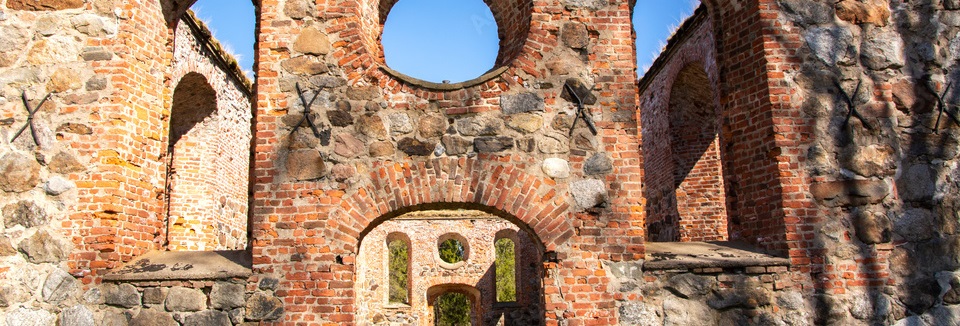
Old Vaasa, or Vanha Vaasa in Finnish, is a historic district located in Vaasa, Finland. Situated on the western coast of the country, Old Vaasa holds a significant place in Finnish history and culture. It was the original site of the city before a devastating fire in the late 19th century led to its relocation. Today, Old Vaasa stands as a reminder of the region’s past, with its well-preserved buildings, charming streets, and cultural attractions drawing visitors from near and far. The history of Old Vaasa dates back to the 17th century when it was established as a trading post and administrative center. Over the years, the town grew in importance, serving as a hub for commerce, culture, and governance in the region. Its strategic location along the Gulf of Bothnia made it a vital port for trade with other Baltic Sea countries, contributing to its prosperity and influence.
One of the defining features of Old Vaasa is its architecture, which reflects a blend of styles from different periods in history. The district is home to a mix of wooden houses, stone buildings, and neoclassical structures, each telling a story of the town’s evolution over time. Walking through the streets of Old Vaasa, visitors can admire the intricate details of the buildings, from ornate facades to colorful window shutters, that speak to the craftsmanship and creativity of generations past.
The centerpiece of Old Vaasa is the Old Vaasa Church, also known as the Vanha kirkko. Built in the 17th century, this iconic landmark is one of the oldest wooden churches in Finland and a testament to the town’s religious heritage. With its tall spire and elegant design, the church is a striking sight against the backdrop of the surrounding landscape. Inside, visitors can explore the historic interior, which features beautiful altarpieces, intricate wood carvings, and other religious artifacts.
In addition to its architectural treasures, Old Vaasa is home to several museums and cultural institutions that offer insights into the town’s history and heritage. The Ostrobothnian Museum, located in the Old Vaasa Court House, showcases exhibits on local folklore, traditional crafts, and archaeological finds, providing visitors with a deeper understanding of the region’s past. The Brage Open-Air Museum, situated near the Old Vaasa Church, offers a glimpse into rural life in the 19th and early 20th centuries, with restored farm buildings and exhibits on traditional farming practices.
Beyond its historical significance, Old Vaasa is a vibrant community with a rich cultural scene. The district is home to art galleries, theaters, and performance venues that showcase the talents of local artists and entertainers. Throughout the year, Old Vaasa hosts festivals, concerts, and other events that celebrate the town’s heritage and bring residents and visitors together in celebration. As a symbol of resilience and rebirth, Old Vaasa serves as a reminder of the strength of the human spirit in the face of adversity. Despite the destruction caused by the fire of 1852, the town was rebuilt and its legacy preserved for future generations to enjoy. Today, Old Vaasa stands as a testament to the enduring spirit of its people and a living testament to the history and culture of Finland. Continuing our exploration of Old Vaasa, it’s worth noting the significance of its geographical location. Situated on the western coast of Finland, Old Vaasa enjoys proximity to the Gulf of Bothnia, which has played a crucial role in the town’s development and identity. The sea has served as both a lifeline and a source of inspiration for the residents of Old Vaasa, shaping their livelihoods and cultural practices over the centuries.
The maritime heritage of Old Vaasa is evident in its fishing industry, which has long been a cornerstone of the local economy. Fishermen from the town would venture out into the Gulf of Bothnia in search of herring, salmon, and other prized catches, bringing back their haul to be sold and traded in the bustling markets of Old Vaasa. Today, fishing remains an important part of the town’s identity, with local seafood restaurants serving up fresh catches to residents and visitors alike. In addition to its economic importance, the sea has also influenced the cultural identity of Old Vaasa, inspiring traditions, folklore, and artistic expressions that reflect the town’s deep connection to the water. Tales of sea monsters, mermaids, and shipwrecks have been passed down through generations, weaving themselves into the fabric of Old Vaasa’s collective memory. Artists and writers have drawn inspiration from the sea, creating works that capture its beauty and power in paint, poetry, and prose.
The natural beauty of the Gulf of Bothnia also provides opportunities for recreation and relaxation for residents and visitors of Old Vaasa. The coastline is dotted with sandy beaches, rocky cliffs, and tranquil coves where people can swim, sunbathe, and enjoy the scenic views. Boating enthusiasts can explore the waters of the Gulf, sailing along the coast or venturing out to nearby islands for picnics and adventures. Old Vaasa’s maritime heritage is celebrated throughout the year with festivals, events, and cultural activities that pay homage to the sea and its importance to the town’s identity. From seafood festivals to boat races to art exhibitions inspired by the ocean, there are countless ways for residents and visitors to connect with Old Vaasa’s maritime heritage and experience the magic of life by the sea. As the sun sets over the Gulf of Bothnia, casting a golden glow over the waters, residents of Old Vaasa gather on the shores to reflect on the day’s adventures and appreciate the beauty of their coastal home. Whether fishing, sailing, or simply strolling along the beach, there’s a sense of peace and contentment that comes from living in harmony with the sea. In Old Vaasa, the sea isn’t just a geographical feature—it’s a way of life, a source of inspiration, and a timeless symbol of the town’s enduring spirit.